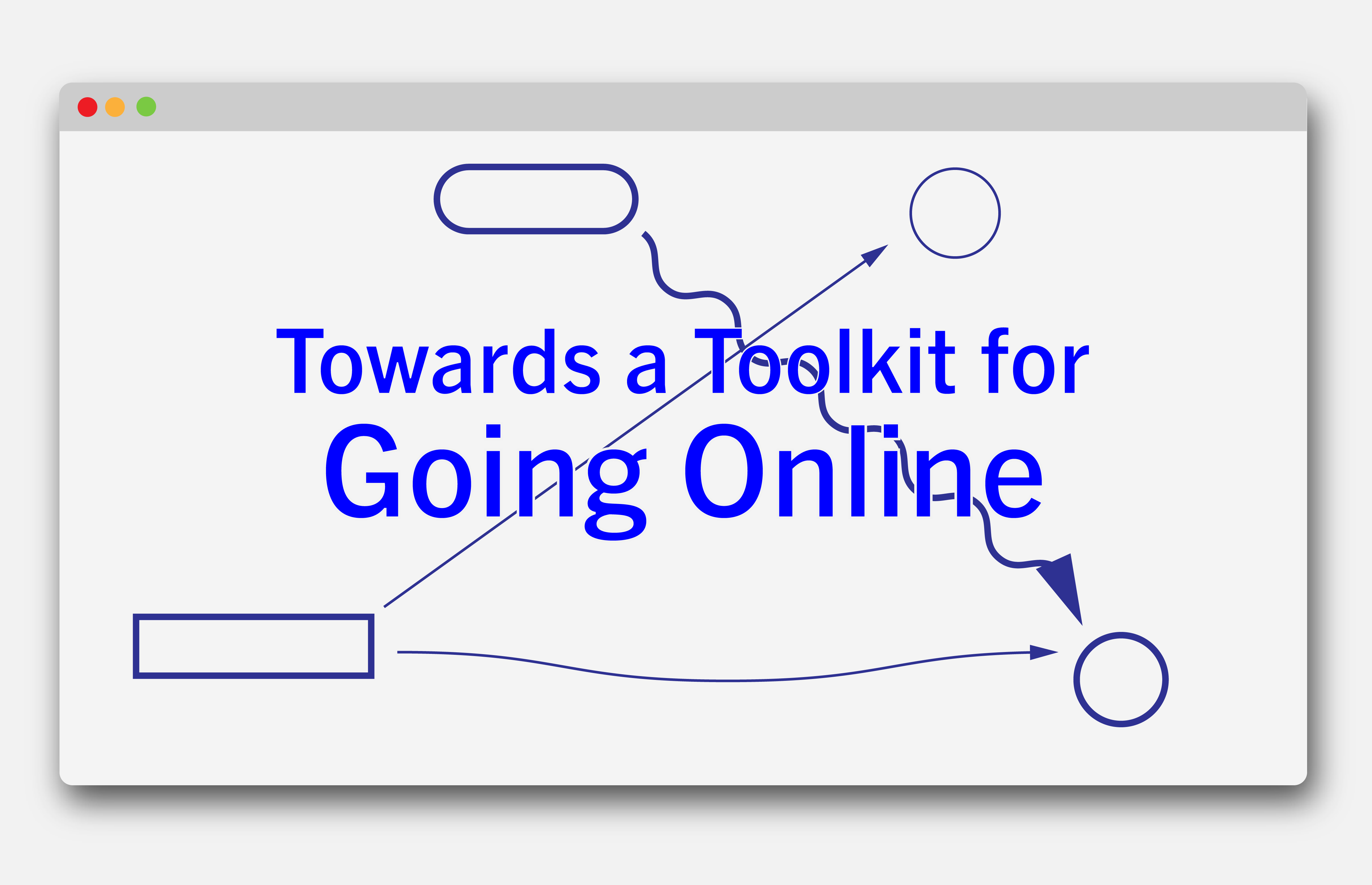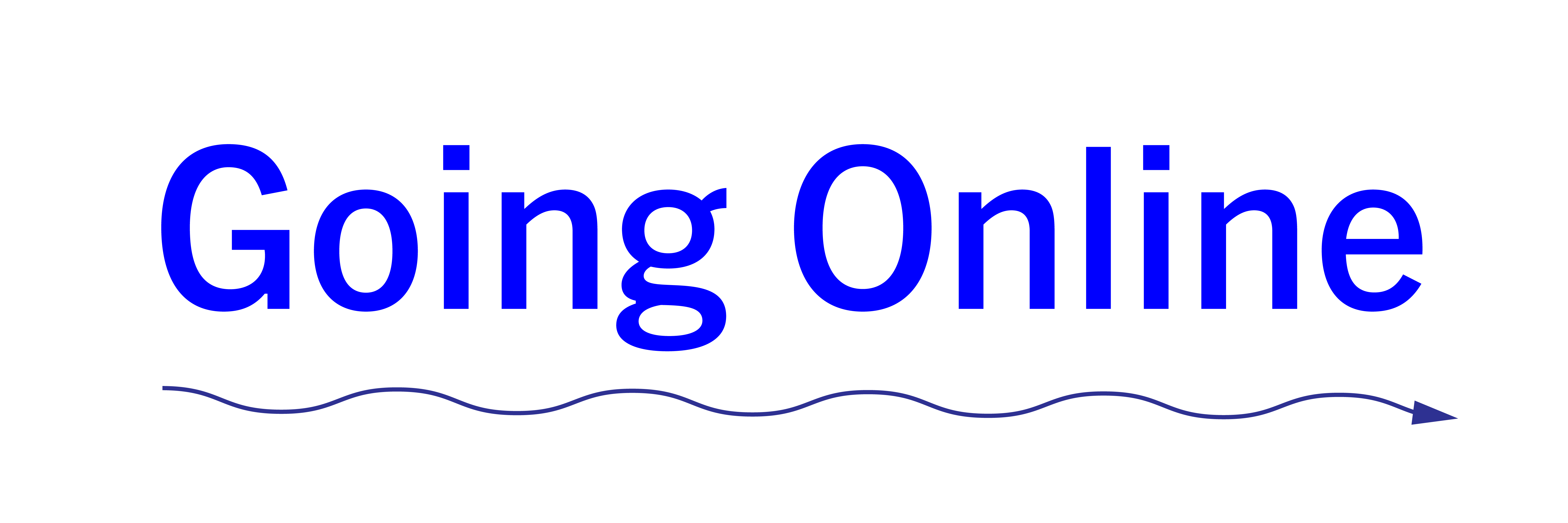 In this research blog, I’ve collected conversations with artists, designers, curators, and program makers about what it meant to ‘Go Online’ as a cultural event. We spoke about metaphors, strategies and experiences – specifically zooming into questions of audiences, interaction, serendipity, contextualization, privacy and much more. At the end of every conversation, I asked: ‘What would you like to add to a potential toolkit? What are do’s and don’ts for Going Online? What are questions you think an organization should ask themselves when their events Go Online?’
In this research blog, I’ve collected conversations with artists, designers, curators, and program makers about what it meant to ‘Go Online’ as a cultural event. We spoke about metaphors, strategies and experiences – specifically zooming into questions of audiences, interaction, serendipity, contextualization, privacy and much more. At the end of every conversation, I asked: ‘What would you like to add to a potential toolkit? What are do’s and don’ts for Going Online? What are questions you think an organization should ask themselves when their events Go Online?’
As discussed earlier, not one event is the same. The hosting organizations, their values, team, set-ups, content, audiences, (etc. – this list could go on and on) differ greatly. Therefore, a toolkit that covers all these different possibilities is a project that cannot be grasped by a series of conversations alone. However, it’s valuable to collect the first thoughts that could go into such a large project. All the different actors provide this advice from their own experiences and points of view – some ideas are overlapping, and others might contrast in what they would like to say. Towards a Toolkit for Going Online, these are the first ingredients:
Ask the fundamental questions
Isolde Hallensleben (a.o. presenter at MU): “If you are organizing an event, you must know the why question: what is it about, who is it for, what do we want to get out of it. And it helps if you already know a little bit about who is going to speak about what. Often speakers do not know from each other what they are going to say, so things are double. If one has already said it, the other can use that to elaborate further. But this lies very much in the preparation. What you want to get out of it? What is the best way to do that?”
Job Claassen (designer); “Common sense should not disappear because it is a quick initiative! We have to be as critical as ever. The situation is not a free pass. Matters such as diversity in programming are as important as before, if not more!”
Know your audience
Veronika Liebl (Ars Electronica): “The most important thing is to understand your audience! In an on-site festival, you can interact much more, – the audience is anyways there so you can guide them. Online it is absolutely essential that you understand the expectations of your audiences. You need to know where they will end up: ff they go to the social media, or via the website, via partners. It is so essential to understand your audiences: their time availability, when they want to engage, if they want to interact, if they want to be passive – all these things needs to be answered before you even start the curation. Distinguish between professional and public audiences, before starting with the content. That’s sometimes what we tend to lack, we are all driven by content, but we sometimes forget to do these steps first and see how we can make this content most beneficial – which is also beneficial for the audience in the end.”
Don’t duplicate the physical
Veronika Liebl (Ars Electronica): “Then, of course, one mistake, what we see quite often is that people tend to duplicate online content from physical worlds. That’s an absolute don’t. Try not to duplicate a 10-hour conference online, people will not follow it. You need to understand first what the audience is and expects, and then you can create a suitable and interesting and exciting program. That’s easier said than done. Even I, who has evaluated exactly this point, know that I will always tend to tap into this pitfall of duplicating physical events. We need to force ourselves to purely think online and try to understand what makes sense. To be sure that we really program something which makes sense in the online context.”
Arvid & Marie (designers) underlined a similar line of thought: “Explore the tools that work in the digital but not in the physical. Getting feedback from many people in real-time, use polls, maybe you can ask more personal questions if people can give anonymous answers. There’s a lot to play with that. In one of our events in Zoom, we used break-out rooms. It can be very interesting to have a short moment to be in a smaller group, to get people to interact with each other. It helps in creating audience dynamics.”
Ilja Schamlé (designer) stresses the importance of fitting terminologies: “Don’t call an online presentation an exhibition. Try to find new words, have new goals that you want to achieve instead of copying old goals and words, which will give no satisfaction because it always refers to the physical. If we can think of a new kind of purpose or essence, it can be more about that than imitating the old. Use the tools as they are, when presenting online, do a funny chat roulette but don’t build a wall [in a 3D room].”
Keep it simple
Throughout the different conversations, the success of simplicity in online formats came back over and over. In the words of Arvid & Marie: “In the end it’s always the simplest thing that works, like just turning on some music.”
Arjon Dunnewind from IMPAKT echoes this, when I asked him about final tips & tricks: “Keep it simple and comprehensible – don’t fall into the temptation that anything is possible, don’t make it too big. But also, make it personal. Online I often miss the idea that you are somewhere with other people, not in a computer environment. I think conveying that feeling is very important. The challenge is to engage and activate an audience online. I don’t have any one-liners for that.” Especially now that we’ve seen one digital event after another, there is a need for clear curation and a shorter duration of events. The interaction is exactly what has become so different.
Experiment and make it special
On that note, Arvid & Marie emphasize the need to do something different: “Try to do something exciting, do something crazy that nobody is doing. Everything around us is closed and boring. We have one space to go crazy. Materialize your wildest desire in the digital! I’m a bit bored with the consensus!”
With experimentation comes improvisation. “Online things should be more open to improvisation than other things. It’s new. The attention span is different. The way people move in and out of events, the way they show themselves is different. For makers, it’s good to keep some level of improvisation. If someone is talking and they run out of content, to have the flexibility to cut it off and move on to the next thing instead of needing to fill up these 30 minutes that are designated for it.”
Check your resources
Veronika Liebl (Ars Electronica): “I would certainly advise people to make sure they have the resources. Not only financially but also the capacities within their team to realize a hybrid and online festival. A hybrid event requires more money than if you do an event online or on-site, it also requires a lot more media capacity. You need people acquainted with media production and streaming, not only the technical team, but among all production teams. Analyze from the very first minute what staff constellation you need. And make sure that your team feels safe and qualified enough to make a hybrid festival.”
Don’t forget about privacy
Thierry Vandenbussche (CPDP Conference) stressed the importance of keeping privacy in account when choosing a platform. “In every revenue model, data is sold, or there is an aggressive AI tracking device. Some platforms are very good, but then one aspect makes them privacy-unfriendly. The locations of the servers are important. There are good examples of applications in Europe that do their homework reasonably well, but that operate from the USA, where it is an open sewer for data.”
On an endnote: there is a lot to take into account. I couldn’t have phrased it any better, as Isolde during our talk when I asked for her advice: “I would like to give you a clear answer, but I also want it to be an ode to the complexity of all those forms of conveying information or creating grounds for discussion or whatever it may be. That’s so versatile, the way you can do it is almost exponential.” With that ode to complexity, I’ll end this blogpost series.


